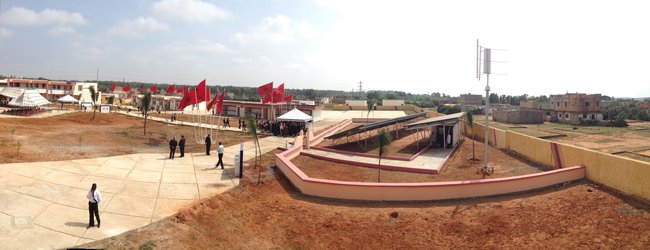

Water treatment facility
A self-sustaining water filtration system at the University of Kenitra in Morrocco. Solar panels and a wind generator power the system that is visible under the right-most solar panels. From there, fresh drinking water is delivered to the taps in the foreground.
Recycling waste water and urine into drinking water is not only for astronauts – the same method is now treating groundwater for a school in Morocco.
ESA has been working for over 20 years on the best recipe for a closed life-support system that processes waste and delivers fresh oxygen, food and water to astronauts. One of the discoveries is how to build and control organic and ceramic membranes with holes just one ten-thousandth of a millimetre across – 700 times thinner than a strand of human hair. These tiny pores can filter out unwanted compounds in water, in particular nitrate.
Building on ESA’s experience with membranes, French company Firmus teamed up with Germany’s Belectric to build a self-sustaining unit powered by solar panels and wind energy.
The pilot model in Morocco will cater for 1200 students. Surplus energy and water generated during school holidays will be shared with locals.
If the membrane approach works well in Morocco, the unit will be scaled up by a factor of ten to deliver water to the rest of the local population.





